Will citrus be alright in the heat wave sun?
Heruga (7a Northern NJ)
5 years ago
Featured Answer
Sort by:Oldest
Comments (100)
dbarron
5 years agolast modified: 5 years agoHeruga (7a Northern NJ)
5 years agoRelated Discussions
Gearing up for the heat wave!
Comments (8)Yep, these are the "Dog Days of Summer" alright! A period of summer, coined in ancient times, said to be the hottest period of the season in the Northern Hemisphere. The Old Farmer's Almanac lists it as the 40 days, occurring between July 3 & August 11. Once believed to be caused by the confluence of the sun and the "Dog Star", Sirius (in the constellation Canis), the brightest star in the night sky and popularly believed to be an evil time "when the seas boiled, wine turned sour, dogs grew mad, and all creatures became languid, causing to man burning fevers, hysterics, and phrensies" - (BradyÂs Clavis Calendarium, 1813) Don't believe any of that still occurs in modern times, but the heat does limit outdoor activities, especially in the garden. Mine is on auto-pilot, until I can work there, without having to retreat inside every couple of hours to rehydrate! Even the weeds get a reprieve! Dog Days, bright and clear, indicate a happy year But when accompanied by rain for better times, our hopes are vain /unknown/ Everyone keep cool! Rb...See MoreHow to Maximize Palm Growth During Heat Waves
Comments (15)i.) Try to post a pic (helps with determining pot size dimensions) ii.) Now a personal RANT: One of my pet peeves is commercial mixes--they can be HORRIBLE! MG sells a potting soil that is virtually PEAT MOSS. I made a big MISTAKE using this disastrous product years ago and I am STILL working to improve the soil. The soil just bakes in the heat and once it is dry, it is virtually impossible to rehydrate. When a soil gets to the point that it virtually repels water it is said to be 'hydrophobic'. You could stand there with the hose forever and the soil remains BONE DRY. Last few days, I have been working to improve the soil in my entire collection (especially for the citrus and palms), by adding humus and coast sand--seems to be working. I know you purchased the 'cactus and soil mix' but I have found this product to nearly as peaty as the standard mix.--Which is absolutely RIDICULOUS for cacti, succulents or citrus. I purchase the MG product of standard soil and essentially use it as PEAT MOSS--again mixing it with good quality humus and coarse sand (don't use the sand marketed as Tropical Play Sand. You can get coarse sand at HD in the construction section--it'll say multipurpose and include gardening uses. iii.) If you have never fed, this may be a big part of the problem, especially since your mix probably peat heavy and STERILE. iv.) How do you define "good sun"? v.) How much watering is "a lot"? Also, how long has it been it's current pot and location. Sometimes, plants appear to be doing nothing but actually growing roots and preparing for a growth spurt! Happy palm gardening!...See MoreRe citrus trees really full sun plants?
Comments (25)Full sun intensity is about 1928 PPFD at noon today here in Pittsburgh (about 41N latitude). Near tropic of cancer where sun is overhead now it is about 2026 PPFD. PPFD is a measure of number of photons striking an unit area. Most full sun plants will reach photo-saturation at about 1000-1200 PPFD. That is they cannot process anymore photons beyond that. Leaves are adapted to that, especially the outer leaves of a tree. Essentially, the variation in full sun intensity with location is not important. Saturation is not a problem for plants - leaf temperature is. Leaves have to spend energy to keep themselves cool so that they can photosynthesize. As temperature rises the net gain from photosynthesis becomes smaller as the leaves try to keep cool. Beyond 90F the leaves start to shutdown and it starts with the outer leaves to save energy while protecting the inner leaves. In fact, the enzymes responsible for photosynthesis become ineffective at this temperature. So leaves are just spending energy to keep cool. At even higher temperatures, especially if it is also accompanied by dry air, the leaves will die. Dry air increases transpiration demands and thus more wasted energy. Sacrificing leaves under these conditions is a natural response. The scalded leaves will still be attached to protect the inner canopy unless a storm takes them away. That exposes the inner leaves, that are not as well adapted, to the full brunt of sun. Either these leaves will quickly adapt or subject to photo-oxidation. Photo oxidation will also look like leaf burn but this time the plant often reacts by dropping the leaves. In tropics, this will induce summer dormancy. Container growing is far more stressful to plants since roots are also subjected to higher temperature and limited availability of water. Beyond 90F the roots ability to absorb nutrients and transport is compromised. Roots will focus on absorbing water only. But that will increase the concentration of nutrients in the soil - especially if using chemical fertilizers - and cause even more stress for the roots. A long way of saying most plants will benefit from some shade when temperatures are high. Mid day watering is also good under these conditions....See MoreCan plants die from excessive heat? Need some advice pls
Comments (61)Hi, fellow new-ish gardener! Just wanted to offer a little reassurance since we seem to have quite a bit in common. I am also relatively new to gardening, and many of these kind gardenweb folks can tell you they have offered me plenty of advice and answers over the past couple of years. I live just a tiny bit west of you, also 6b in Southeastern Pennsylvania. We had the same wretchedly cold and snowy winter, 108 degree heat indexes all this week, and are currently getting your same thunderstorm and flash flood watch. I have a bit of a plant collecting disease, so I have a huge range of plants, shrubs, and trees in my yard, even after just a few years of gardening. Many started life on the clearance rack because I don't have an unlimited budget. However, we do seem to have a different approach in terms of plant care. My plants get amended soil, mulch, deadheading and weeding. They get divided when I want more. And this week, I watered them, which was the first watering the ones not in hanging baskets got all year. They are absolutely thriving, even with my benign neglect. Plants mostly want to survive, and my thought process is that any plant that needs such specialized care that it doesn't thrive under my natural conditions was not going to do well in my yard anyway. I can't control the weather, so there is no sense in overstressing it. And I embrace our very cold and very hot temps - I need the cold for spring bulbs and the heat for summer flowers. If my flowers are rewarding me with a yard full of blooms and pollinators, yours will be fine with your much more attentive care. Lose the tarp and let them do their thing!...See MoreHeruga (7a Northern NJ)
5 years agoVladimir (Zone 5b Massachusetts)
5 years agoponcirusguy6b452xx
5 years agomyermike_1micha
5 years agolast modified: 5 years agotapla (mid-Michigan, USDA z5b-6a)
5 years agobklyn citrus (zone 7B)
5 years agoSilica
5 years agolast modified: 5 years agomyermike_1micha
5 years agolast modified: 5 years agoKelley_GA8a
5 years agoMonyet
5 years agolast modified: 5 years agoAlanna Migliacci
5 years agonikthegreek
5 years agolast modified: 5 years agomyermike_1micha
5 years agolast modified: 5 years agoJan
5 years agoAmy (montreal, canada)
5 years agotapla (mid-Michigan, USDA z5b-6a)
5 years agolast modified: 5 years agoVladimir (Zone 5b Massachusetts)
5 years agotropicofcancer (6b SW-PA)
5 years agoVladimir (Zone 5b Massachusetts)
5 years agogregbradley
5 years agotapla (mid-Michigan, USDA z5b-6a)
5 years agoAmy (montreal, canada)
5 years agotapla (mid-Michigan, USDA z5b-6a)
5 years agolast modified: 5 years agonikthegreek
5 years agolast modified: 5 years agotapla (mid-Michigan, USDA z5b-6a)
5 years agonikthegreek
5 years agolast modified: 5 years agoMonyet
5 years agotropicofcancer (6b SW-PA)
5 years agolast modified: 5 years agotapla (mid-Michigan, USDA z5b-6a)
5 years agoMonyet
5 years agolast modified: 5 years agoponcirusguy6b452xx
5 years agoAlanna Migliacci
5 years agonikthegreek
5 years agolast modified: 5 years agotropicofcancer (6b SW-PA)
5 years agotropicofcancer (6b SW-PA)
5 years agonikthegreek
5 years agolast modified: 5 years agoHeruga (7a Northern NJ)
5 years agolast modified: 5 years agoponcirusguy6b452xx
5 years agoHeruga (7a Northern NJ)
5 years agosocalnolympia
5 years agomyermike_1micha
5 years agojenny_in_se_pa
5 years agoHeruga (7a Northern NJ)
5 years agoHeruga (7a Northern NJ)
5 years agobklyn citrus (zone 7B)
5 years ago
Related Stories
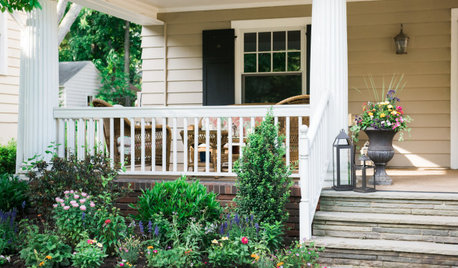
SUMMER GARDENINGHow to Help Your Garden Survive a Heat Wave
Find out how to keep your plants thriving in summer’s heat and how to tell if sunburned ones can be saved
Full Story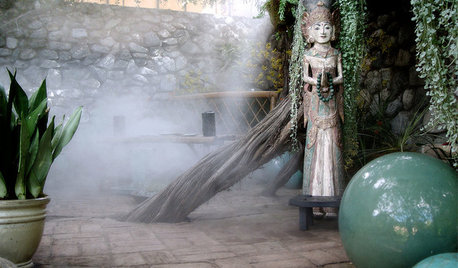
FEEL-GOOD HOME7 Strategies for Beating the Heat This Summer
High temperatures are breaking records. Here are ways you can cope
Full Story
GARDENING AND LANDSCAPINGCitrus 101: Start Your Own Backyard Orchard
This Earth Day Weekend, Add Some Green, Style and Deliciousness to Your Landscape
Full Story
DECORATING GUIDESHow to Cool Down a Room in Hot Weather
Here are 15 tips for staying cool and comfortable without an air conditioner or a ceiling fan
Full Story
BATHROOM DESIGNA Designer Shares Her Master-Bathroom Wish List
She's planning her own renovation and daydreaming about what to include. What amenities are must-haves in your remodel or new build?
Full Story
LIFEIs Cabin Fever Real? Share Your Story
Are snow piles across the U.S. leading to masses of irritability and boredom? We want to hear your experience
Full Story
MOST POPULARIs Open-Plan Living a Fad, or Here to Stay?
Architects, designers and Houzzers around the world have their say on this trend and predict how our homes might evolve
Full Story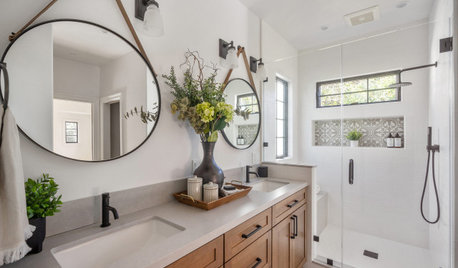
BATHROOM DESIGN5 Common Bathroom Design Mistakes to Avoid
Get your bath right for the long haul by dodging these blunders in toilet placement, shower type and more
Full Story
WHITEWhat to Know Before You Paint Your Walls White
A coat of white paint can do wonders in one room and wreak havoc in another. Here are tips for using the popular hue
Full Story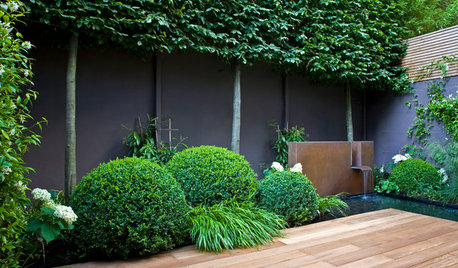
GARDENING AND LANDSCAPING10 Reasons to Use Black in Your Outside Space
It’s become a favorite shade to use inside, but now black is migrating out to gardens, patios and balconies — with dramatic results
Full Story




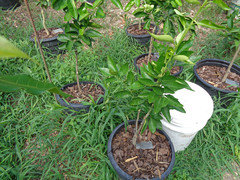
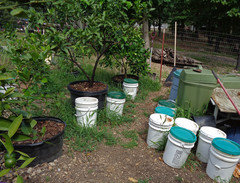
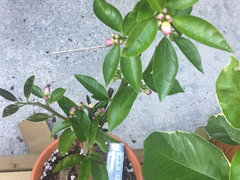


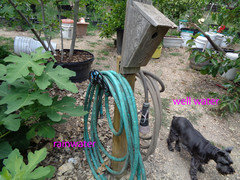

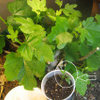
jenny_in_se_pa